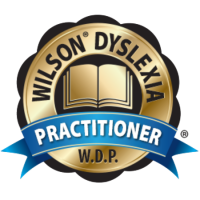How Did Parent Teacher Conferences Go For You?
 If you had the best conference ever, CONGRATULATIONS!
If you had the best conference ever, CONGRATULATIONS!
If you just had one that was difficult, please know this:
YOU ARE NOT ALONE!
Teachers do their best to help struggling student, but most of the time they are not allowed the class time nor the “tools” to make real changes.
If your child is struggling, if homework turns into a daily battle, if your bright child is feeling not very bright, then fix the underlying processes that make school easier.
Yes, learning doesn’t have to be a struggle. Get started before the new year gets difficult.
Writing assignments…UGH!!!! Sometimes trying to get a long paper written can feel like a forever process. Writing can be VERY disjointed for some students. They know they have to write a page so they just start writing whatever pops into their mind. Ideas end up being repeated over and over or become a series of random thoughts. Let’s make this really concrete for students.
Below you’ll find an easy way for kids (and, actually, adults too) to look at a writing assignment and make it “real” in such a way that they are clear about how they will write. This is really a “tasty” way to go about writing!
Here’s to having the best school year ever, Jill Stowell
Can a Hamburger Help Your Child
Taking something familiar from real life, can often help students to understand the big picture of what they are supposed to do.
There’s a commercial on TV for a popular fast-food restaurant that shows someone eating a huge, juicy hamburger with all kinds of stuff – cheese, lettuce, tomatoes, sauce, pickles – spilling out as he bites down. And the point is that this ISN’T any old boring hamburger, but this one is really juicy and special (a.k.a. messy).
We sometimes use the analogy of a loaded hamburger to help students understand how a multi-paragraph paper is organized.
The whole hamburger represents the overall topic or focus of the paper – what it’s all about.
The top and bottom bun represent the introduction and the conclusion. These are the first and last paragraphs in the paper, and while they don’t look exactly the same, they are basically made of the same stuff.
The top bun, or the introductory paragraph introduces the reader to the topic and gives just enough information to get the reader interested in reading on.
The concluding paragraph is like the bottom bun. It is the last paragraph and has basically the same content as the introduction. It restates and wraps up the topic.
Everything in between the introduction and conclusion – the meat and all the condiments – make up the body of the paper, each being a different key point. Each one gets its own paragraph (or paragraphs) to describe or explain it’s overall contribution to the whole topic.
Try getting a large picture of a hamburger. Draw a line next to the top and bottom bun on the left hand side. Here, the student can put his ideas for the introduction and conclusion.
On the right hand side, draw lines out from the meat, cheese, tomatoes, etc. The student can jot down the key points of the paper on these lines in the order he wants to present them.
Using the hamburger as a guide, now he has a structure with which to write a paragraph or a simple multi-paragraph paper that will have an introduction,body/details, and conclusion.
Give it a try..and then maybe eat a hamburger for dinner!




